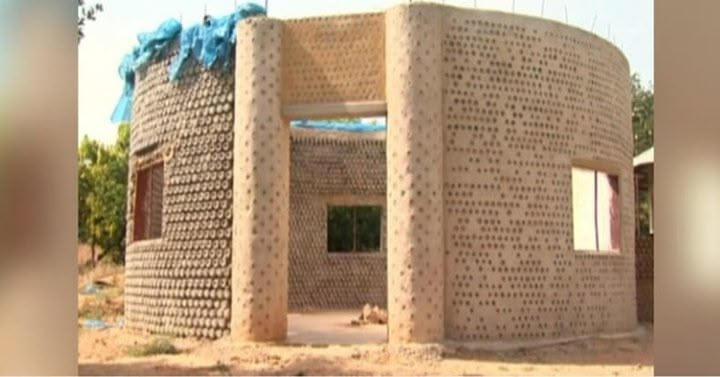A very interesting idea,
but I'm not sure how effective it will be long term.
Plastic, in the normal forms we recognise, is not stable. It's chemicals change and recombine, gradually breaking down into permanent nano-particles (chemically stable molecules) that persist in the environment, polluting agricultural soils, rivers, water reservoirs and oceans.
There are, as yet, no completed long-term scientific studies that can show whether or not these particles are carcinogenic or harmful in other ways. Caution is far better than risking permanent damage to crucial ecosystems and human and animal health.
When plastic is exposed to sunlight, even if it has UV-protective chemicals added, it breaks down much faster, becoming brittle and falling part within three years or so, depending on the type of plastic and time exposed.
So the the sand in these bottle with simply fall in a heap as soon as the plastic bottles crack open.
Perhaps if these structures could be covered in the traditional mudbrick finish -- a thick slurry of clay, cowdung and linseed oil -- they might be sufficiently protected for a while longer.
But there is no stopping of the internal chemical movements that will eventually break down the plastics anyway.
Humanity needs to be moving away from the use of plastics as much as possible.
Far better to use the traditional African methods of earth building: cheap, readily avilable, easy to repair and maintain, thermally efficient, comfortable, and beautiful.




